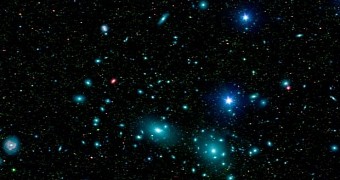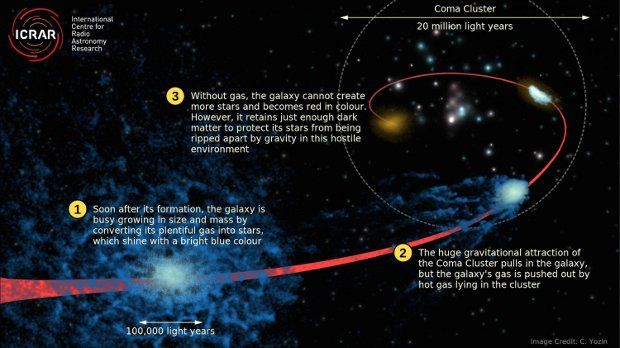Some 300 million light-years from us, in the constellation Coma Berenices, lies the Coma Cluster, an impressive collection of galaxies of which astronomers have so far only identified about 1,000.
As part a new study on the Coma Cluster, scientist Cameron Yozin at the International Center for Radio Astronomy Research studied several of the galaxies included in it and found them to be nothing like our Milky Way.
These distant galaxies are very much dead
The astronomer says that, although about the same size as the Milky Way, the Coma Cluster galaxies that he focused on pack merely 1% of the total number of stars documented in our cosmic neighborhood.
The researcher goes on to say that, by the looks of it, these so-called dead galaxies stopped making new stars sometime about 7 to 10 billion years ago, when they became part of the Coma cluster.
The galaxies lost their ability to forge stars because the gravitational pull of their companions in the cluster stripped them of their gas reserves. With no gas left to fuel star formation processes, they became barren.
“The immense gravitational force of the cluster pulls in the galaxy, but its gas is pushed out and essentially stolen by hot gas in the cluster itself,” said Cameron Yozin, as cited by Phys Org.
Why weren't the galaxies completely destroyed?
In a paper in the journal Monthly Notices of the Royal Astronomical Society, researcher Cameron Yozin proposes an explanation for why these dead galaxies in the Coma Cluster have not yet been destroyed by the gravitational forces acting on them.
Not to prolong the suspense, the astronomer argues the reason the galaxies have not yet been completely obliterated is that they pack about 100 times more dark matter than visible matter.
Although it cannot be observed directly and so it is still a mystery to science, Cameron Yozin thinks that dark matter is what is holding the visible matter in the dead galaxies he studied tightly packed.
“They have however avoided being ripped apart completely in this environment because they fell in with enough dark matter to protect their visible matter,” the astronomer explained in a statement.

 14 DAY TRIAL //
14 DAY TRIAL // 

